Programming is an exciting field where mastering the basics is crucial. Strings, which represent a fundamental data structure in Python, play an essential role in many aspects of software development. In the following guide, we will explore the various methods you can use to manipulate and analyze strings in Python.
Key Insights
- Checking for uppercase and lowercase letters is straightforward and can be used to validate passwords or user inputs.
- You can check if a string contains only letters or alphanumeric characters.
- Various formatting options help present strings attractively.
- The Python documentation offers in-depth information about strings and their functions.
Basic String Methods
In the following, I will introduce you to some of the most important methods you can use to work with strings in Python. You will learn how to check if all letters in a string are uppercase or lowercase, as well as other useful functions.
1. Check if the string is lowercase
With the is_lower() method, you can find out if all the letters of a string are written in lowercase. This can be particularly useful for validating user inputs.
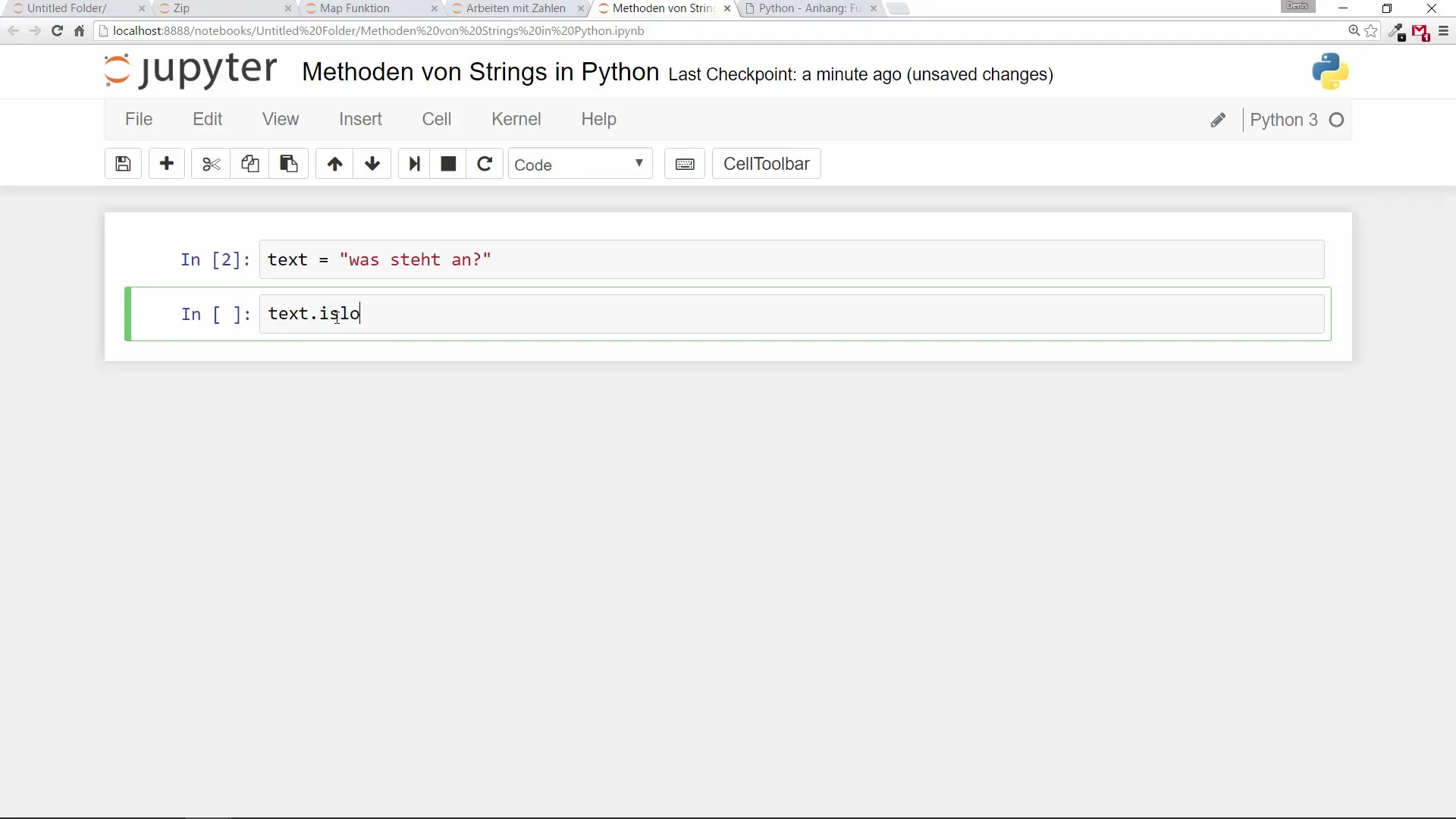
If we want to check if the string is uppercase, we use isupper().
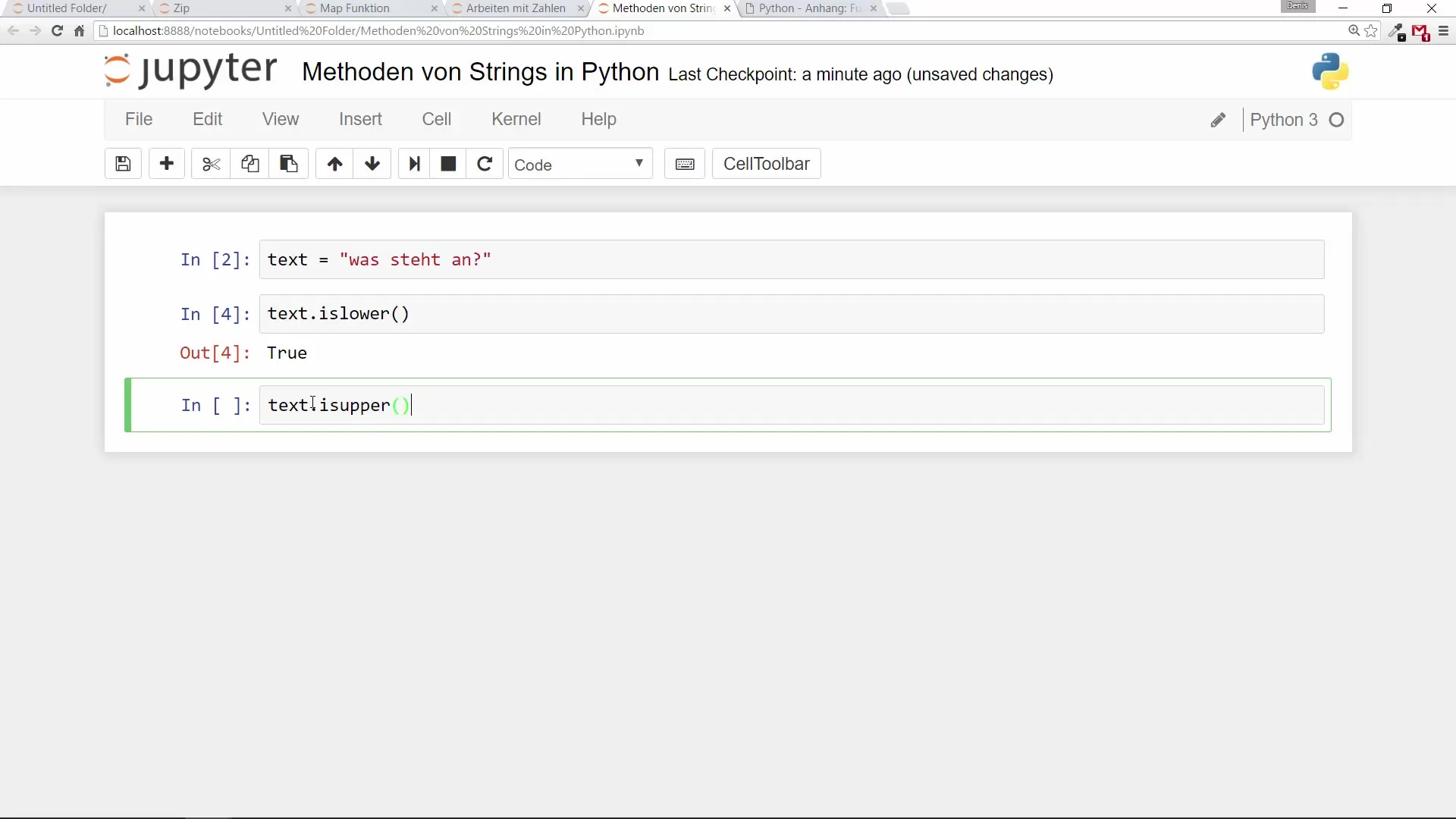
2. Check if all characters are alphanumeric
With isalnum(), you can test if all characters in a string are alphanumeric, meaning they only contain letters and numbers. This method returns False if, for example, there are spaces or special characters in the string.

If special characters are present, it returns False.
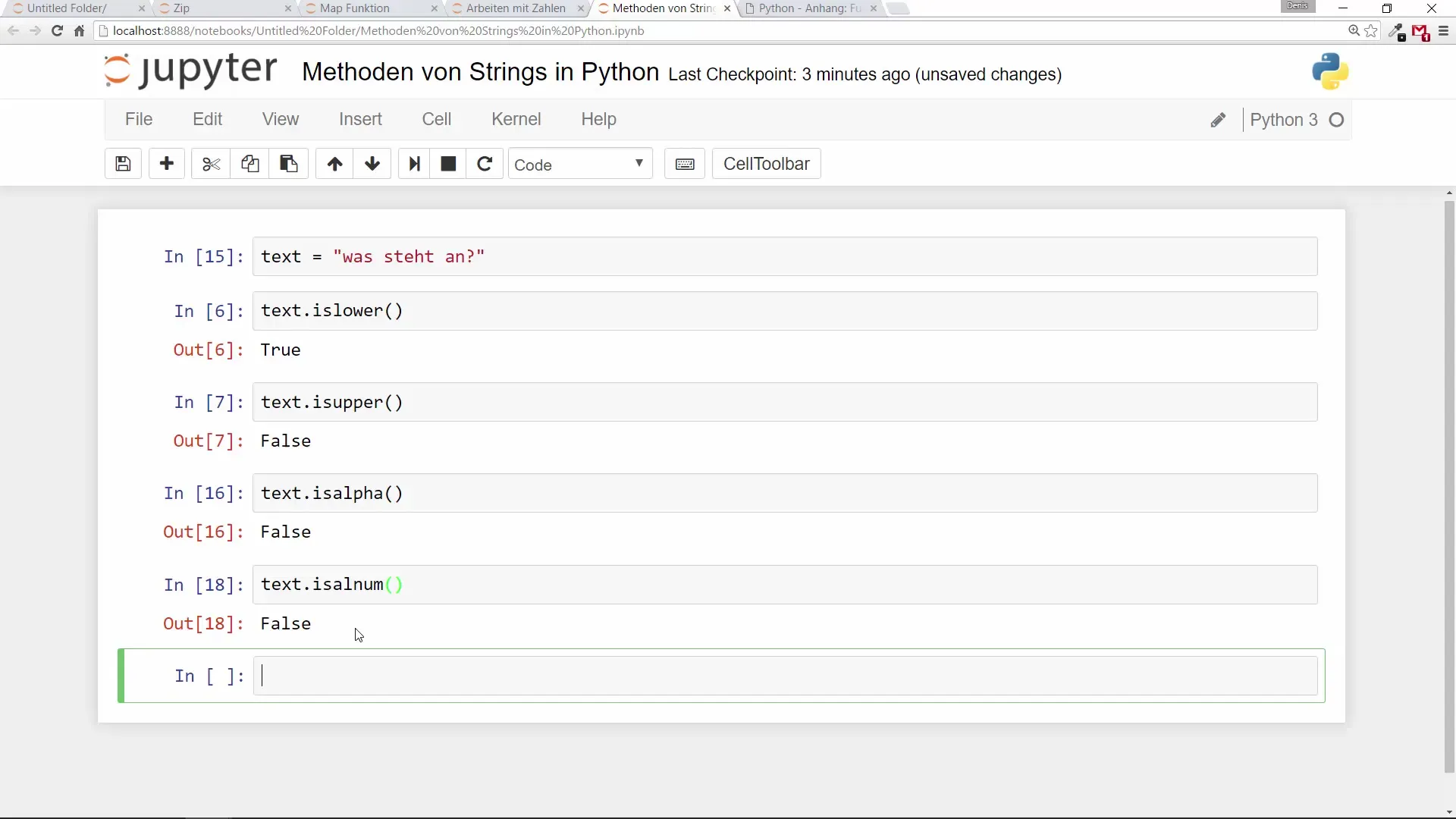
3. Check for whitespace
The isspace() method returns True if the string consists only of whitespace.
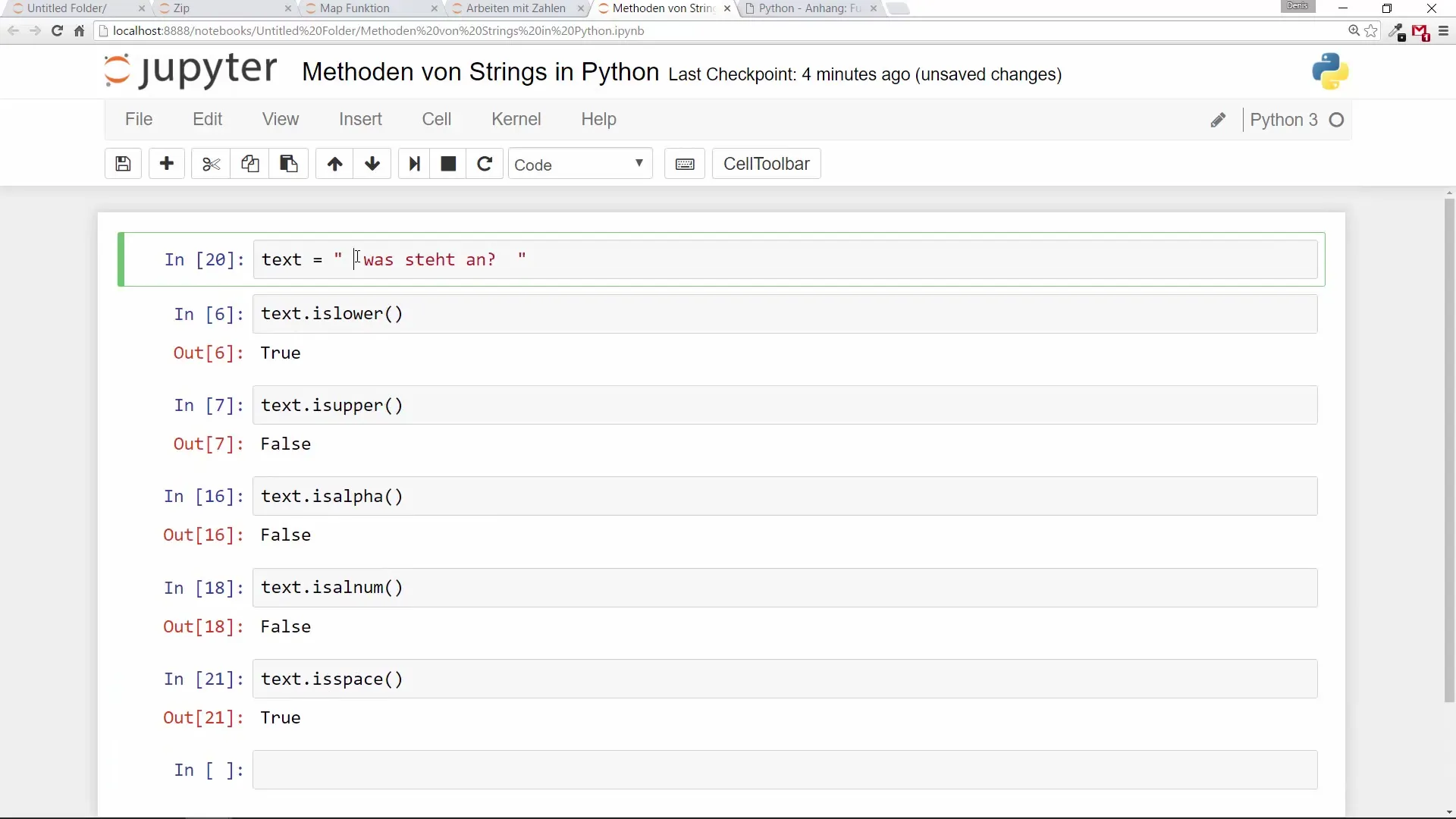
4. Check if it ends with specific characters
The endswith() function allows you to check if a string ends with a specific character. This is useful to confirm whether inputs have the correct suffix, such as in filenames or URLs.
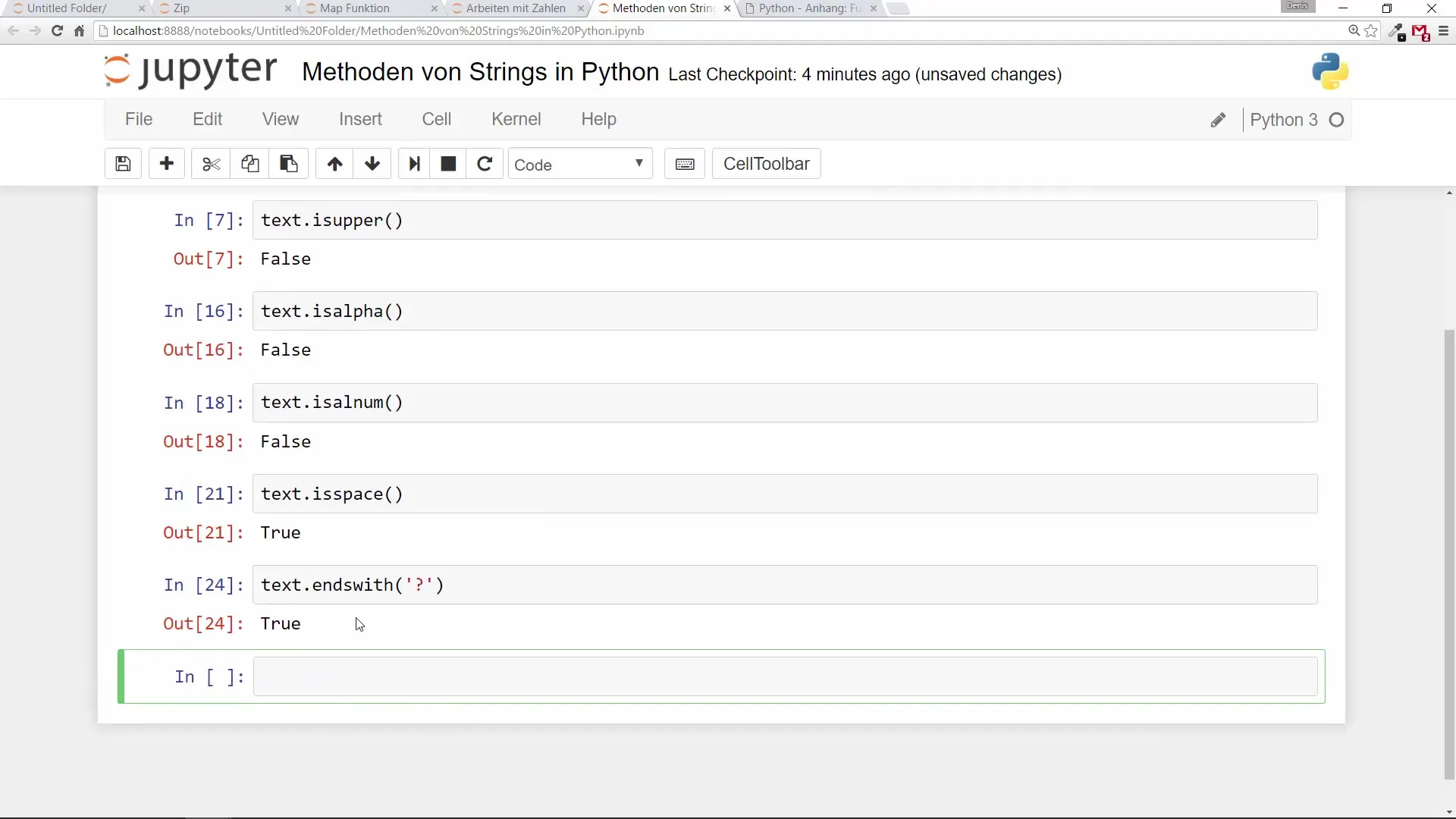
Formatting Strings
In addition to checking contents, formatting strings is important for enhancing the appearance and structure of texts.
5. Centering Text
You can use the center() method to center a string within a specified width. You can also specify a particular character to surround the text.
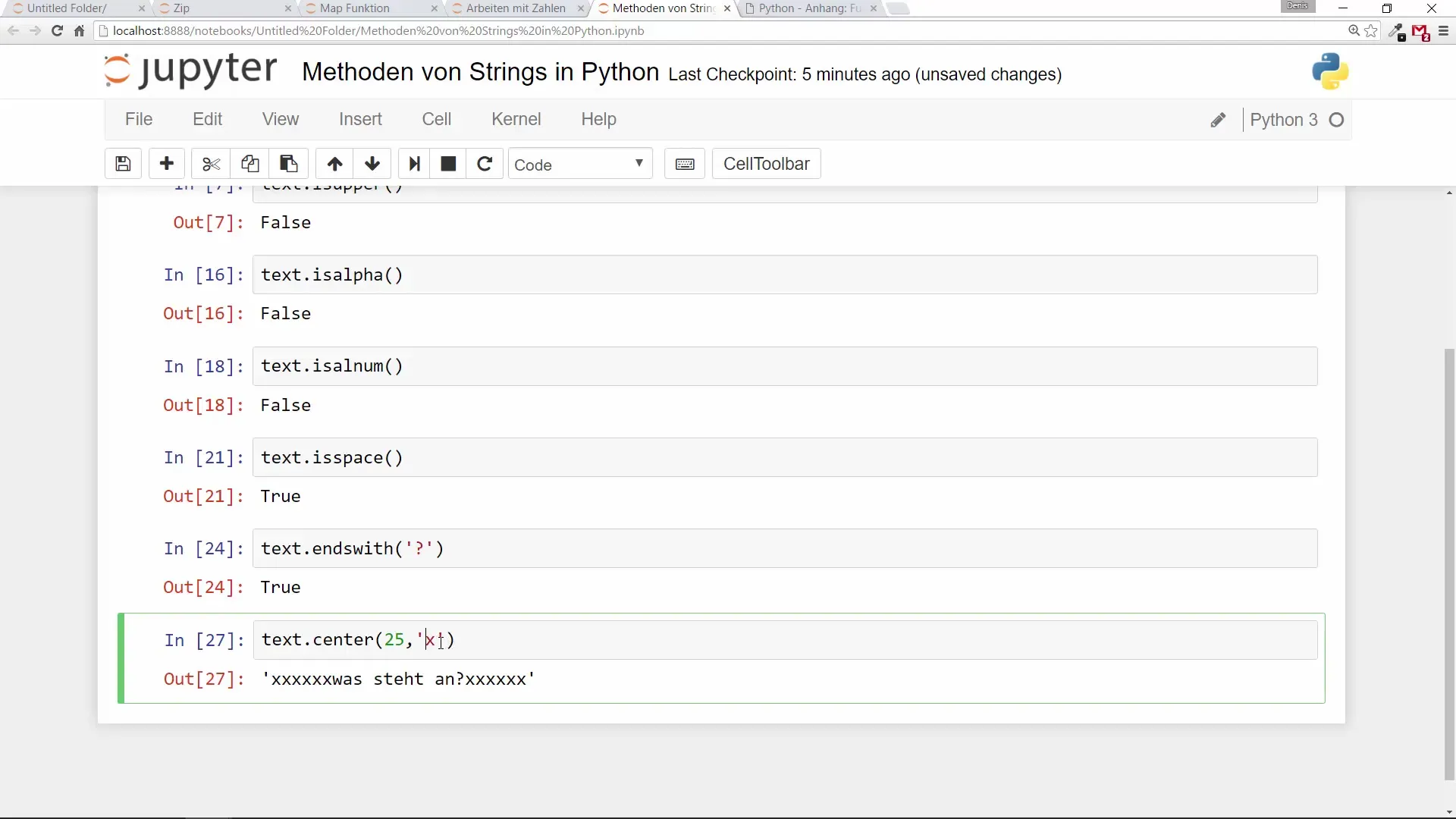
6. Managing Tabs
The expandtabs() method helps convert tabs in a string into spaces. This is especially useful when you need consistent formatting for text.
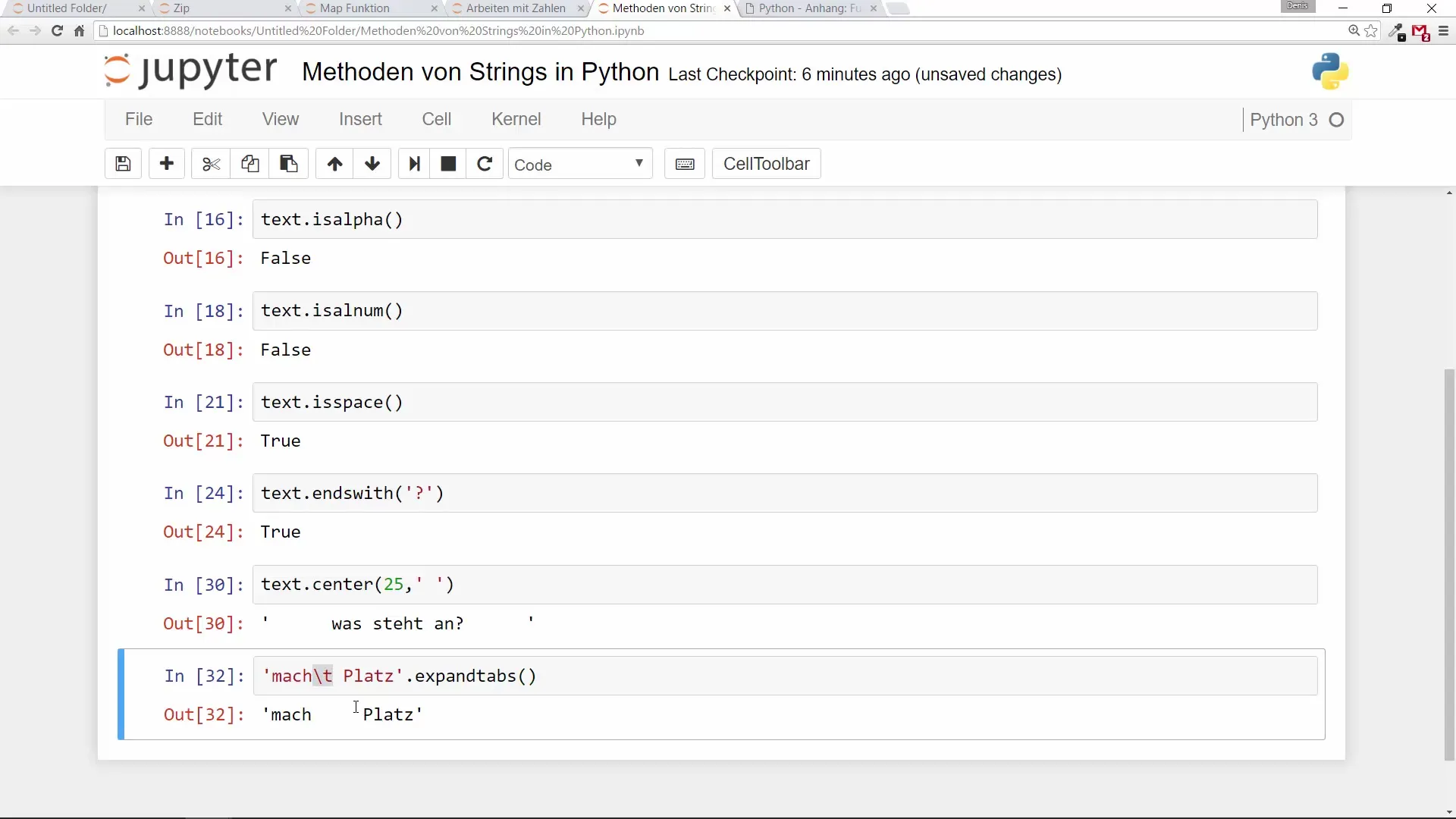
Further Resources
For a deeper exploration of strings in Python, I recommend visiting the official Python documentation. Here you will find detailed information about string methods and their applications.
Summary - Effectively Using String Methods in Python
In this guide, you have learned how to effectively check and format strings in Python. You have been introduced to various methods that help you validate user inputs and present texts neatly. With this knowledge, you are well-equipped to successfully use strings in your Python projects.
Frequently Asked Questions
How can I check if a string contains only letters?Use the isalpha() method for this check.
What does the isalnum() method do?It checks if the string contains only letters and numbers.
How can I convert a string to lowercase?Use the lower() method to convert all letters to lowercase.
Can I apply multiple methods to a string consecutively?Yes, you can chain methods to perform multiple operations at once.


